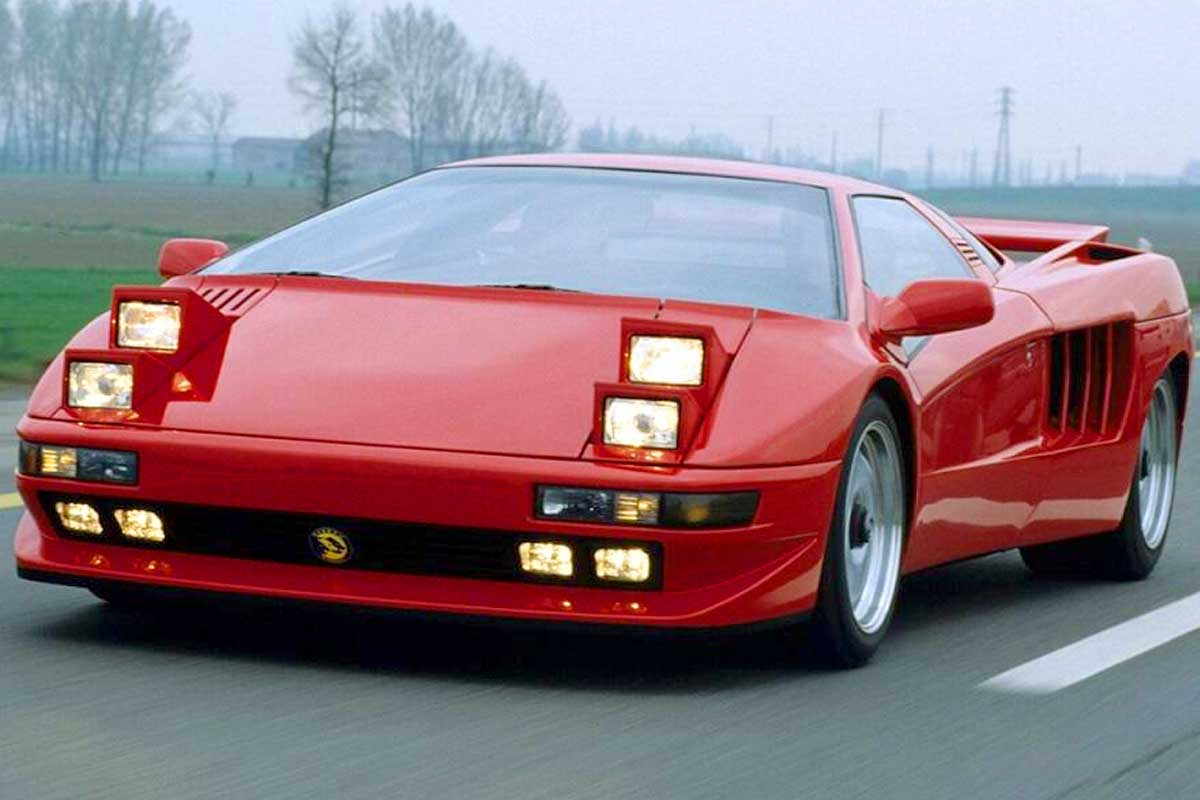
A 16-cylinder engine, a design by the father of the Countach and an investor who provided the soundtrack for Midnight Express and American Gigolo: do you think we dreamed up a crazy project in a fit of delirium? No, the car was real. It was the Cizeta-Moroder V16T, a project that could only have come out of the '80s!
One man's crazy project: Claudio Zampolli
This unlikely supercar is the brainchild of Claudio Zampolli, who grew up in Modena, which makes it hard to escape the aura of Italian sports car brands. After working as a test and development engineer at Lamborghini, he left for the United States in 1973 to develop the Taurus dealership network, which was undergoing a major reorganization at the time. Zampolli went on to become one of the most sought-after suppliers of sports and luxury cars to showbiz stars, as his dealership was located on Hollywood Boulevard in Los Angeles. The Italian had already been working on the concept of a luxury supercar since the late 1970s, with a clearly defined vision: a radical, exclusive and uncompromising car that would surpass all current benchmarks.
Push it to the limit!
Among the customers he services is a certain Giorgio Moroder, owner of a Lamborghini Countach. Yes, THE Giorgio Moroder, the pope of disco, producer of Donna Summer and composer of countless hits from the 70s and 80s: Take my breath away (Top Gun), Push it to the limit (Scarface) and What a feeling (Flashdance), that's him!
Moroder, equally passionate, was thrilled and provided the necessary funds. The two Italians joined forces on a 50/50 basis to create the Cizeta-Moroder project, named after the Italian pronunciation of founder and designer Claudio Zampolli's initials (CZ - Ci-Zeta).
Drawing on his experience at Lamborghini, Zampolli was able to recruit competent people to develop the car, including Oliviero Pedrazzi as chief engineer and engine designer, Achille Bevini and Ianose Bronzatti as suspension and chassis designers, and Giancarlo Guerra, formerly of Scaglietti, famous for his work on the Ferrari 250 GTO. We've had worse CVs!
V12 ? Little player!
On the mechanical side, Zampolli doesn't want a "simple" V12, and believes that the car can only work if it stands out from the crowd. So it'll be a transverse V16! No one had ever attempted such a folly: Cadillac had a V16 in the 1930s, but it enjoyed generous space thanks to a long hood, and lived a quiet life at low revs. Zampolli entrusted this technical mission to experienced chef Oliviero Pedrazzi, who had supervised the design of the Urraco's V8.

Zampolli's version features two V8 engines with flat crankshafts, inspired by the eight-cylinder architecture of the Urraco P300. The block will be a single, custom aluminum casting, mated to a five-speed longitudinal ZF gearbox. This T-shaped configuration gives the V16T its name, and is inspired by the Lamborghini Miura's configuration. With a displacement of 6.0 liters, the V16 features 64 valves, eight camshafts, two injection systems, four cylinder heads and two timing chains, producing a total of 540 hp at 8,000 rpm and 715 Nm of torque at 6,000 rpm. Vertiginous figures for the time, exceeding the 492 HP of the Diablo and the 470 HP of the F40, but resulting in a supercar weighing 1700 kilos despite the use of a chassis made of elliptical chromium-molybdenum steel tubes. An F40 barely exceeds a ton by comparison!
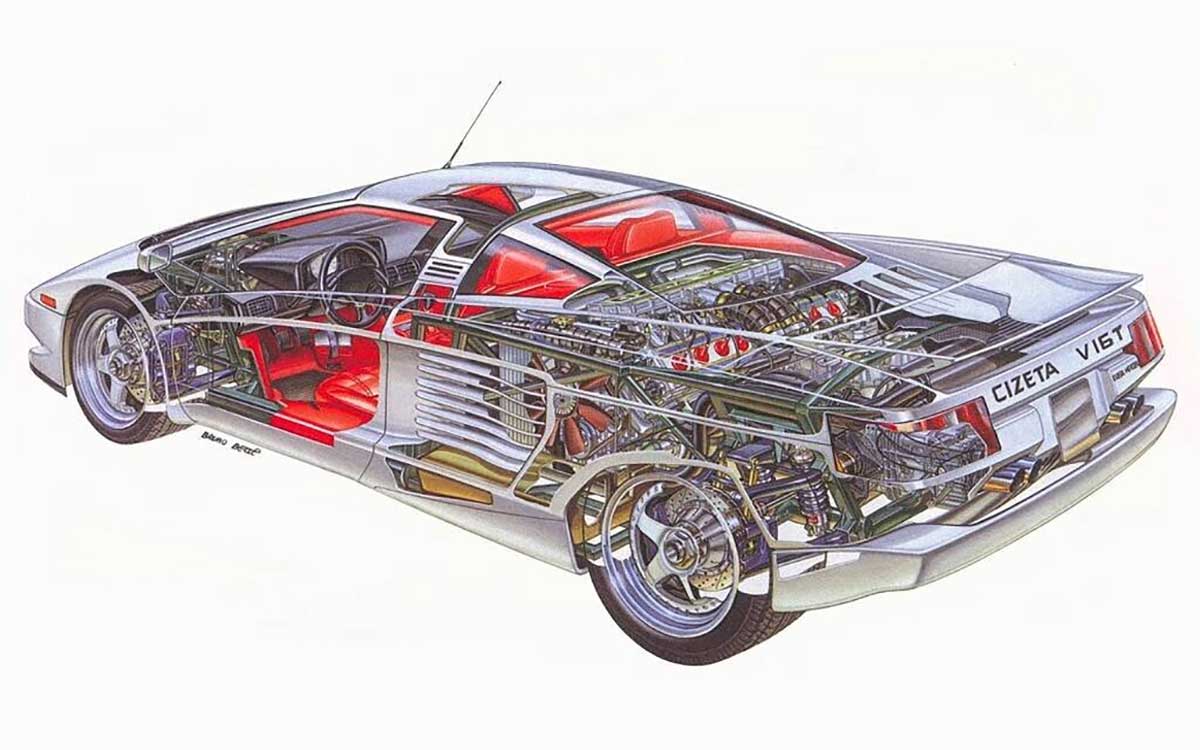
The other Diablo
How do you sublimate this technical delirium? Once again, Zampolli's contacts at Lamborghini enabled him to make contact with Marcello Gandini, who had previously designed the Lamborghini Countach, the Alfa Romeo Carabo and the Lancia Stratos. For many, the Cizeta is in part the "real" Diablo that Gandini had imagined, but which was watered down by Chrysler, Lamborghini's owner from 1987 onwards, who had the design retouched by the in-house styling center for the production version. Annoyed by this "betrayal", Gandini reportedly submitted the original Diablo design to Zampolli, who nevertheless requested a few adjustments. The shape of the V16T's front nose is taken from the original Lamborghini Diablo design, the rear has undergone design modifications by Zampolli himself.
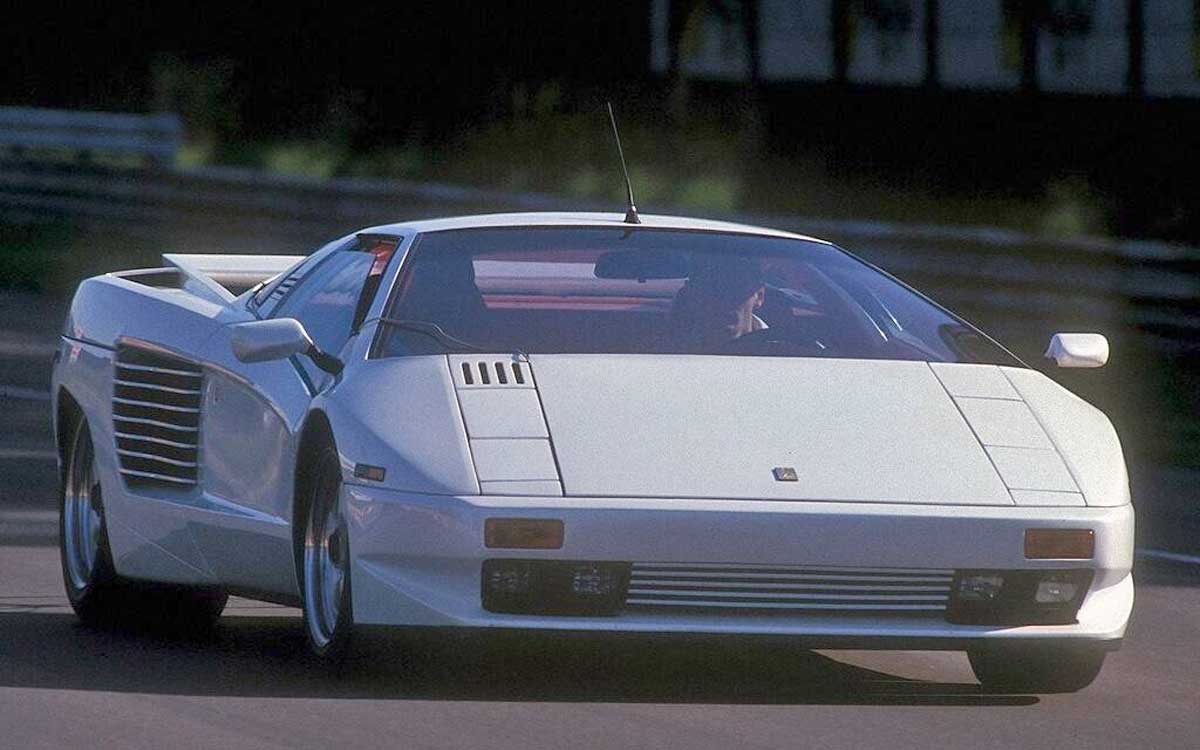
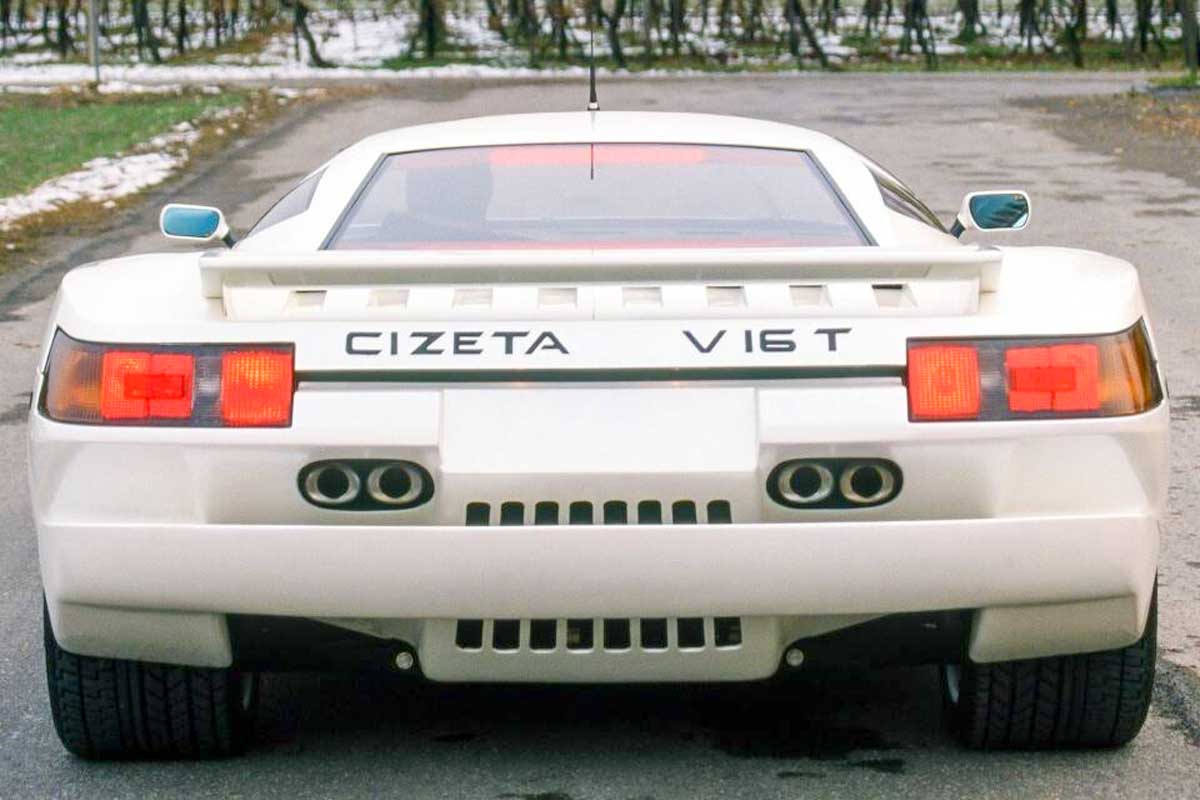
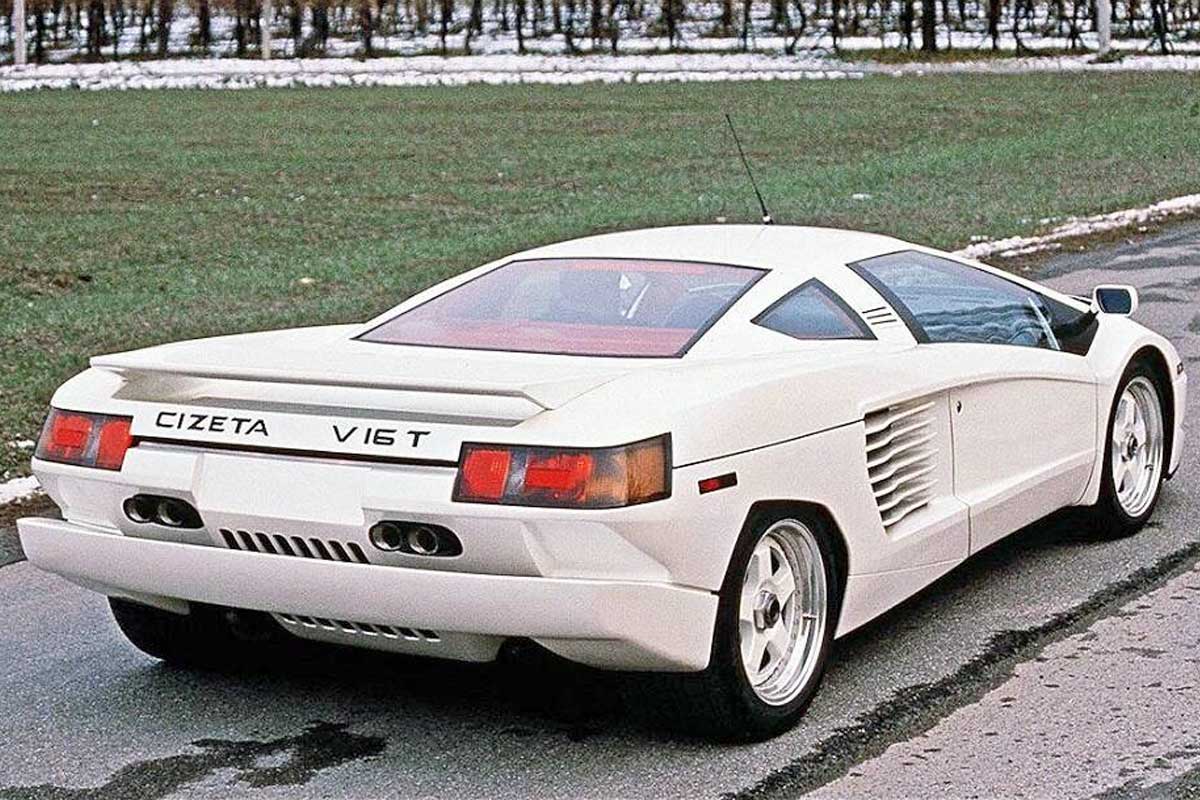
Above all, to accommodate the monstrous engine, the stern is 2.05 metres wide - unheard of at the time! The overall design is clearly futuristic for its time, and the car wouldn't have looked out of place in a Cyberpunk movie set. The enormous rear wings give it an almost rocket-like appearance, while the horizontal gills on the flanks seem to exacerbate those of the Ferrari Testarossa. In another atypical design choice, the V16T features four retractable headlamps, two stacked vertically on each side, while the taillights are borrowed from... the Alpine A610. With all lights on, the whole thing gives the beast a rather strange and monstrous appearance.
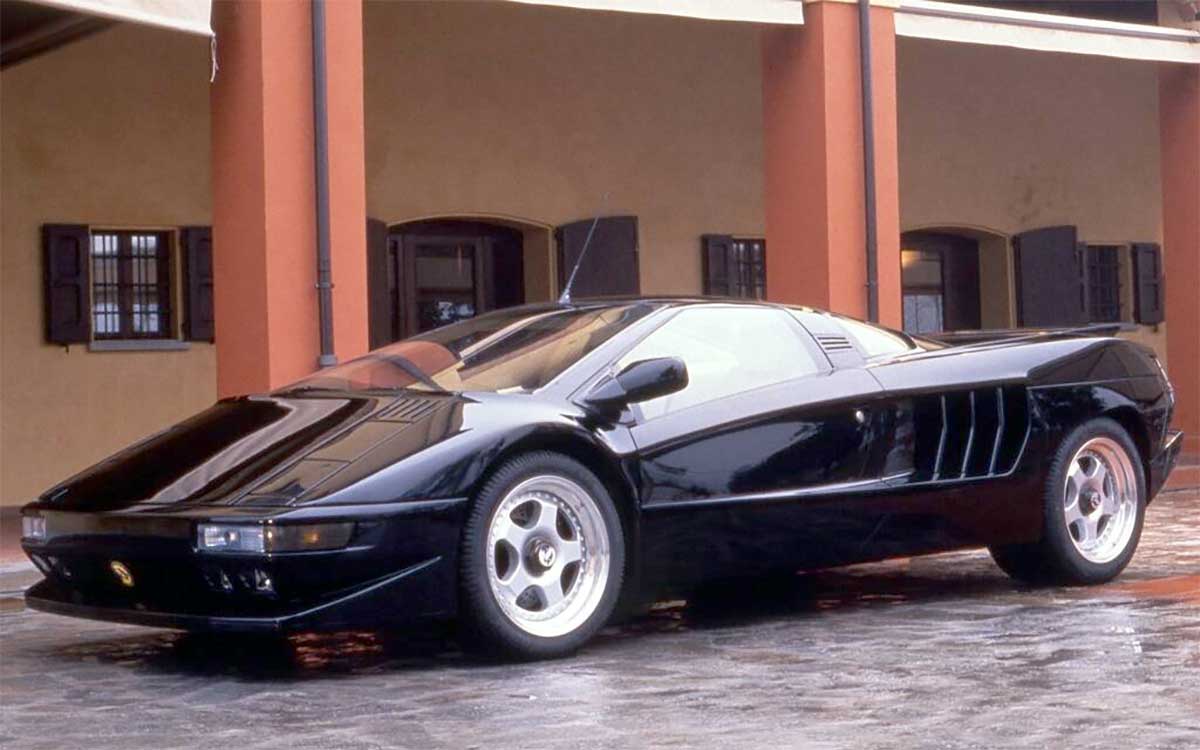
Big performances
The brakes feature drilled and grooved discs all round, and use twin-piston calipers developed by Brembo. The wheels are fitted with race-style hubs, featuring five positioning pins and a large central nut for fixing. Finally, the two-piece, five-spoke cast-aluminum OZ Racing wheels are shod with Pirelli P Zero 245/40ZR-17 tires at the front and 335/35ZR-17 at the rear.
From the outset, the car was considered an exclusive sports car, reaching a top speed of 328 km/h and accelerating from 0 to 100 km/h in just 4 seconds, with a host of luxury features. It was presented at the 1988 Los Angeles Auto Show in California, just ahead of the Diablo. It was well received, with 14 deposits paid to launch production. However, only one prototype bearing the Cizeta-Moroder name was produced before the partnership was dissolved. The car, in pearl white with a red leather interior, remained in Moroder's possession and underwent a complete restoration in 2018, after which it was sold at auction in January 2022.
The planets have not aligned
In 1991, the catalog price of a Cizeta was estimated at US$300,000. Only eight examples (including one prototype) were actually built between 1991 and 1995, before the company relocated its operations from Modena, Italy, to Fountain Valley, California. But circumstances conspired against the company: the economic slowdown of the mid-1990s, combined with the car's non-conformity with American regulations (the last straw!) and its high price, limited production to custom orders. The Asian market offered good prospects, but the financial crisis there too cut the momentum.
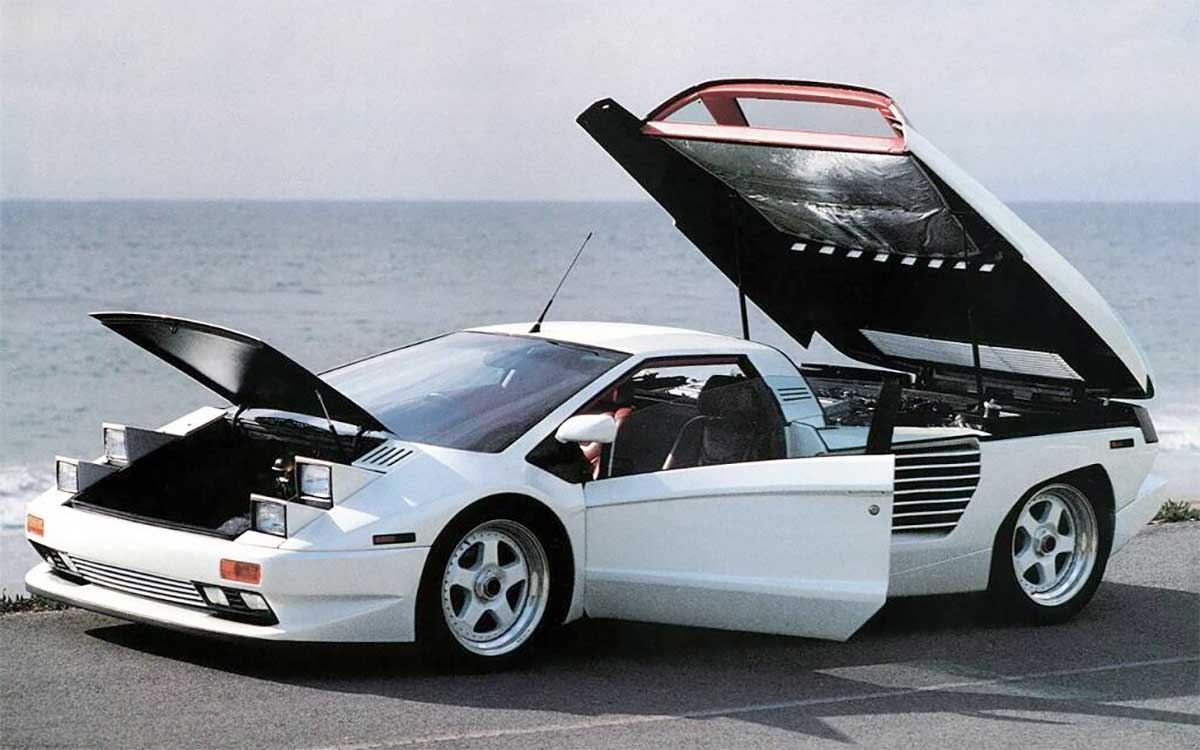
Worse still, shortly after the car's launch, Giorgio Moroder and Claudio Zampolli parted company following a dispute over the car's slow production, This was due in particular to the fact that the body was made of aluminum instead of composite materials. Moroder wanted the car to have a fiberglass body and secretly approached Porsche, which eventually reached his partner's ears. The break was then consummated. Thus, while the car debuted under the Cizeta-Moroder name, all customer cars were simply badged Cizeta V16T.
Still available in 2018!
Three more cars were produced (two coupes and a spyder) in 1999 and 2003. The car produced in 2003 was a convertible variant of the V16T called the Cizeta Fenice TTJ Spyder, made at the special request of a Japanese customer. As of May 1, 2006, the car was still produced to order, but was now priced at $650,000. In a 2018 interview, Zampolli considered the car theoretically still in production and available for purchase, although no car had been built since the 2003 Spyder. Zampolli finally passed away on July 7, 2021, at the age of 82.
The Cizeta V16T remains one of the craziest and most exotic Italian supercars ever imagined. As such, it is one of the most sought-after and inspiring supercars, alongside Countach, Diablo, Testarossa and DeLorean, in the musical and visual genre of Synthwave/retrowave, which draws its imagination from the 80s.

It's a bit lacking in this kind of star-studded delirium.
Incidentally, it would be interesting to know what this has done for the reliability of existing models.